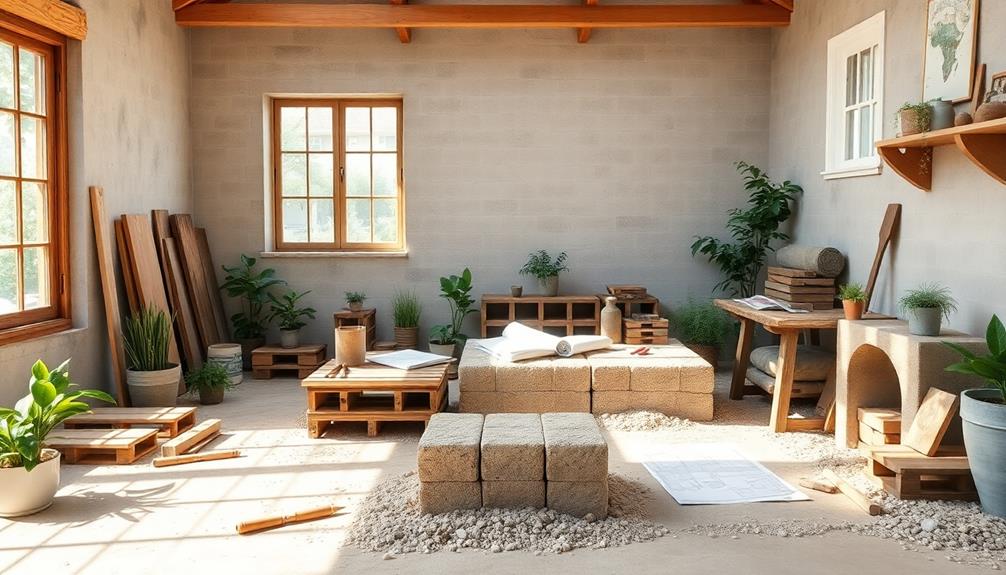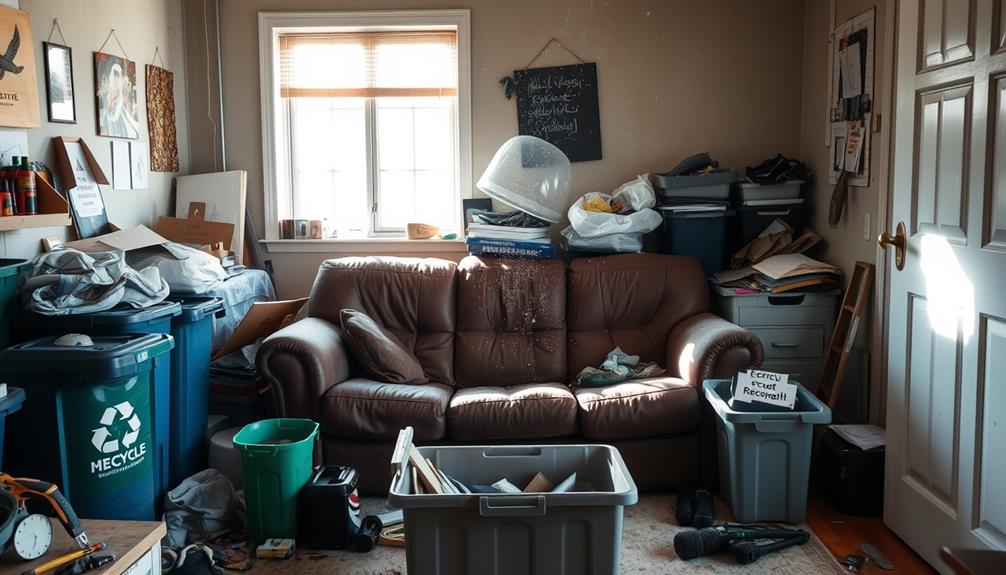You can achieve a solid foundation for your project without breaking the bank by exploring various budget-friendly options. Gravel and concrete block foundations are great choices for small to medium structures, while pier and beam options work well in clay soils. Consider innovative methods like dry stack foundations or gravel bag systems to cut costs even further. If you're into tiny homes, gravel foundations and recycled materials can save you money. Knowing the local zoning laws and potential tax benefits will help you maximize your budget. Keep going to uncover more tips and options to build smart while saving!
Key Takeaways
- Gravel foundations are cost-effective at about $3.50 per sq. ft., ideal for smaller structures like tiny homes.
- Dry stack foundations reduce labor costs by using interlocking blocks, minimizing mortar needs for construction.
- Loose rock foundations offer stability for lightweight structures, providing an affordable and natural option.
- Modular foundations are prefabricated for quick assembly, making them a smart choice for budget-conscious builders.
- Utilizing recycled materials can significantly lower construction costs while promoting environmental sustainability.
Affordable Foundation Options

When you're planning a budget-friendly build, choosing the right foundation is essential for both cost and stability.
Gravel foundations are a great option, costing around $3.50 per square foot, perfect for smaller structures.
If you're looking for durability, concrete block foundations range from $5 to $7 per square foot, offering pest resistance and moisture protection.
For areas with expansive clay soils, consider pier and beam foundations, which provide easy access to plumbing for $5,000 to $10,000.
A slab-on-grade foundation is also viable, costing between $4,500 and $21,000 and ensuring quick installation.
Finally, treated wood foundations, priced at $8 to $12 per square foot, are excellent for high water tables.
Each option balances affordability and practicality for your project.
Innovative Cost-Saving Methods
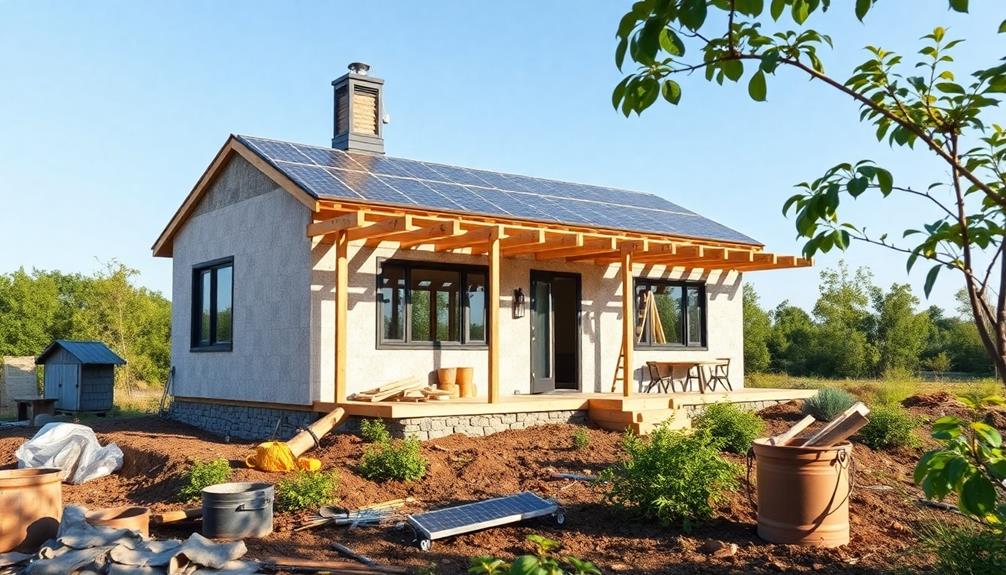
Several innovative and cost-saving foundation methods can help you build on a budget without sacrificing quality.
By exploring these options, you can find the right fit for your project while keeping costs down:
- Dry Stack Foundations: Using interlocking concrete blocks, this method eliminates the need for mortar and reduces labor costs.
- Loose Rock Foundations: This simple and effective method uses loose stones to create a stable base, ideal for lightweight structures.
- Gravel Bag Foundations: Filling bags with gravel and stacking them creates a sturdy and affordable foundation that's also environmentally friendly.
Implementing these methods allows you to save money while ensuring your foundation is durable and reliable.
Tiny Home Foundation Basics
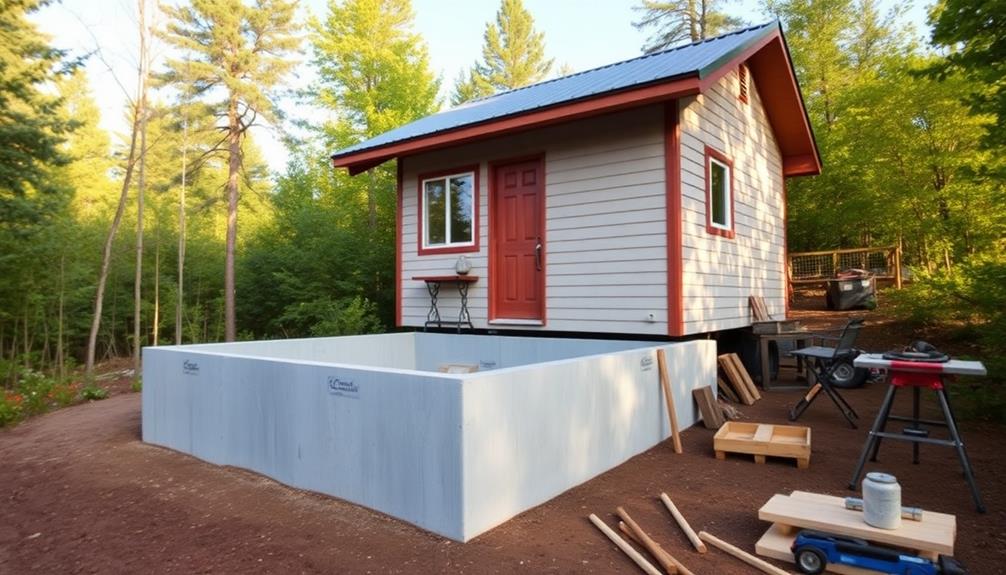
Tiny homes require a solid foundation to guarantee stability and longevity, and understanding the basics of tiny home foundations is essential for your building project.
You have several foundation options to contemplate, each with its own benefits. Gravel foundations are budget-friendly and ideal for lighter structures, while concrete block foundations offer durability and pest resistance.
If you're in an area with expansive clay soils, a pier and beam foundation might suit your needs, providing easy access to utilities. Slab-on-grade foundations are quick to install but require stable soil.
For sustainable choices, look into treated wood or straw bale foundations. Evaluating these options will help you make an informed decision that fits your budget and lifestyle.
Zoning Laws Overview
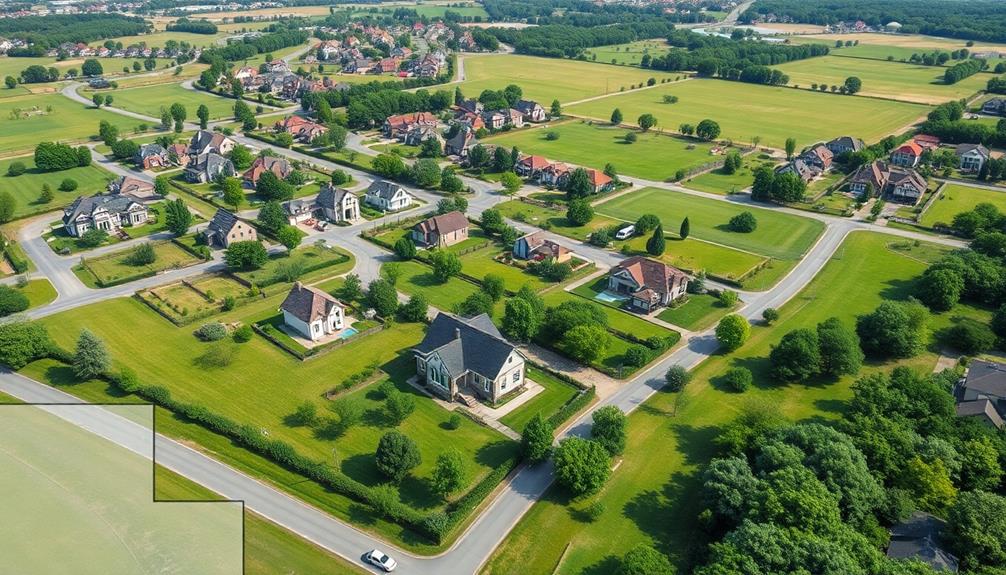
Understanding zoning laws is essential for anyone considering a tiny home. These laws dictate where you can place your tiny home and what regulations you need to follow. Ignoring them can lead to fines or forced removal of your home.
Here are three important points to keep in mind:
- Local Regulations: Each county has different zoning regulations, so check with your local government.
- Permitted Zones: Some areas allow tiny homes only in designated zones, like agricultural or residential areas.
- Community Support: Look for local communities or groups that advocate for tiny homes; they can be valuable resources.
Tax Benefits for Tiny Homes
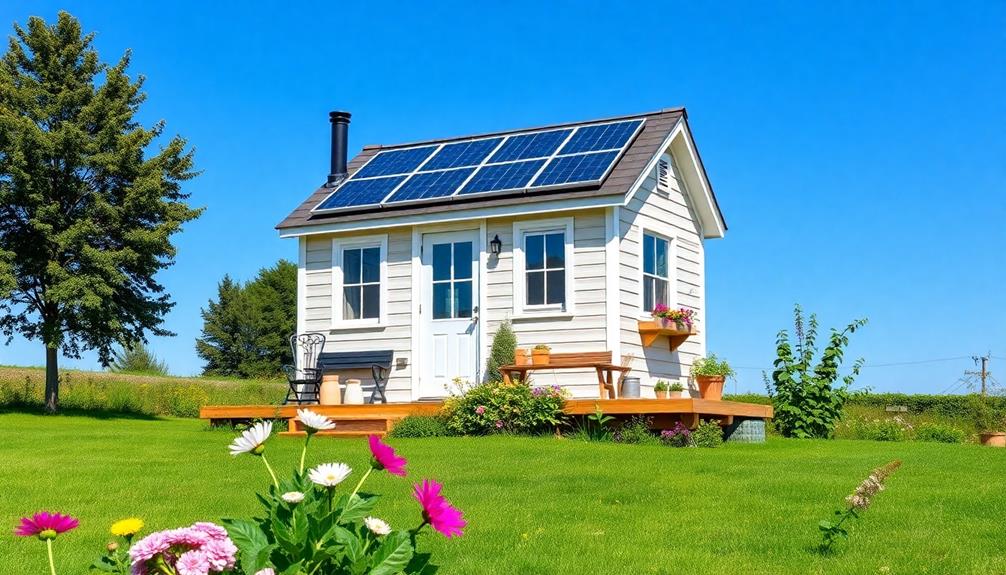
Maneuvering through local zoning laws can open the door to various financial advantages for your tiny home. Many areas offer potential tax exemptions based on size, meaning smaller homes like yours might see reduced property tax assessments.
Additionally, if your tiny home meets green building standards, you could qualify for further tax benefits. Understanding the significance of long-term financial planning for your living space can enhance your approach to managing expenses, especially as you consider future needs like assisted living expenses.
It's essential to consult local tax laws, as these can vary notably by location. Engaging with a tax professional can help you understand your options and guarantee you're maximizing your savings.
Community Support Resources

Community support is essential for anyone venturing into tiny home living, and connecting with like-minded individuals can enhance your experience considerably. Engaging with your local community can provide valuable resources, encouragement, and opportunities for collaboration.
Many tiny home enthusiasts also share tips on building codes and zoning laws, which can be vital for your planning process. Here are three ways to tap into community support:
- Join Local Groups: Look for Facebook groups or Meetup events focused on tiny home living. These platforms often host discussions and share tips among enthusiasts.
- Attend Workshops: Participate in workshops offered by sustainable living organizations. You'll gain hands-on skills and knowledge while meeting others who share your interests.
- Volunteer: Get involved with local nonprofits or community projects related to sustainable living. Volunteering can strengthen bonds and expand your network within the tiny home community.
Common Questions Answered
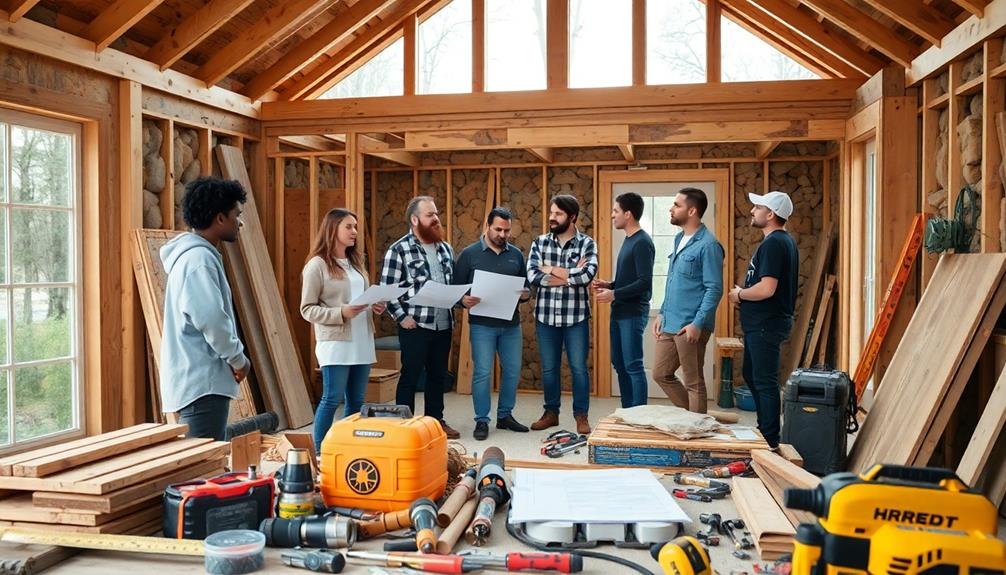
As you explore the tiny home lifestyle and connect with fellow enthusiasts, you might have some questions about the practicalities involved. Here are some common inquiries answered:
| Question | Answer |
|---|---|
| Can I place a tiny home on my property? | Yes, as long as you follow local zoning laws. |
| What's the cost range for tiny homes in Arizona? | Between $20,000 and $200,000, depending on size and features. |
| Are there communities for tiny homes? | Yes, many offer shared amenities and support. |
| What are the minimum size requirements? | Foundations need a minimum of 200 sq. ft.; wheels need 160 sq. ft. |
| Do tiny homes qualify for tax exemptions? | They may, based on size and green building standards. |
Having the right information can help you make informed decisions as you commence your tiny home journey!
Frequently Asked Questions
What Materials Are Best for DIY Foundation Projects?
For DIY foundation projects, consider using gravel for its cost-effectiveness, concrete blocks for durability, or treated wood for moisture resistance. Each material offers unique benefits, so choose based on your specific needs and soil conditions.
How Do Weather Conditions Affect Foundation Choice?
You might think all foundations are created equal, but weather conditions considerably influence your choice. For instance, freeze-thaw cycles demand sturdy materials, while heavy rain calls for elevated designs to prevent water damage and settling.
Can I Use a Foundation on Uneven Terrain?
Yes, you can use a foundation on uneven terrain. Consider options like pier and beam or rubble trench foundations, which adapt well to varied surfaces, ensuring stability and proper drainage for your structure.
What Is the Lifespan of Different Foundation Types?
Ever wonder how long your foundation will last? Gravel and treated wood can endure 30 years, while concrete blocks and slab-on-grade typically last 50 years or more. Choose wisely to guarantee durability for your home.
How Do I Maintain My Foundation Over Time?
To maintain your foundation over time, regularly inspect for cracks, guarantee proper drainage, and manage vegetation around it. Address any issues promptly, and consider professional assessments to keep your foundation stable and safe.
Conclusion
To summarize, choosing the right foundation for your dream home doesn't have to break the bank. By exploring affordable options and innovative methods, you can lay a solid base without emptying your wallet. Remember, when it comes to building, it's not just about saving money but also about making wise choices that last. So, keep your eyes on the prize, and you'll find a foundation that supports your vision and budget perfectly!
